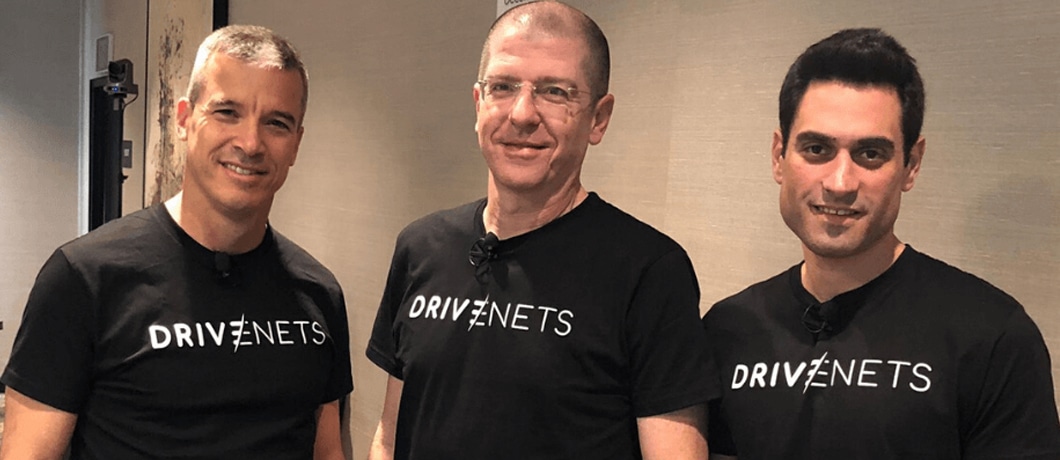So, for those of you that didn’t catch us live, here is a recap with the recordings. During the presentation, the delegates were actively participating in the dialog with our key experts and raising focused questions around topics such as product development, support and migration. It was exciting for all of our team to be able to speak with networking subject matter experts and get their viewpoint on the DriveNets Network Cloud solution, but most importantly, to hear back from them on how the solution provides value to service providers who are facing extreme growth and higher network costs – cutting into their profitability.With a focus on tier 1 SPs as their initial customers @drivenets is IMO setting themselves up to have more sustained success in the open networking world than others that have come before. #NFD22
— Phelan Kell (@Michael_EDavis) February 12, 2020
I was really impressed by the @drivenets presentation. Leveraging containers and orchestration model for driving whitebox hardware for service providers. #NFD22 @TechFieldDay
— Tony E – CCIE# 64908 (@showipintbri) February 12, 2020
DriveNets Overview
Kicking off the session was Ofer Weill, Director of Product Marketing at DriveNets, to tell the story of how DriveNets was built by networking die-hards who believed that growing the value of the network would require bold actions. He explained how DriveNets set out to revolutionize Communications Service Provider (CSP) networks by disaggregating the network infrastructure from core to edge, in the same way hyperscalers disaggregated the cloud infrastructure.DriveNets Network Operating System (DNOS) Architecture
How should service provider networking architecture adapt to address exponential growth in traffic? Amir Krayden, VP R&D Customers, described the DriveNets Network Cloud architecture and how it follows a disaggregated model with the cloud-native software disaggregated from the hardware on which it runs, supporting white boxes from multiple vendors based on an open design. DriveNets Network Operating System (DNOS) is based on containers and microservices, and creates a unified shared infrastructure over a distributed architecture, running different routing services for different network functions (Core, Edge, Aggregation/Peering, and Access).Networking poetry by @drivenets
“The router should be a projection of the network instead of the network being a projection of the router.” #NFD22 — Phil Gervasi (@network_phil) February 12, 2020
Why Disaggregated?
Why is disaggregation penetrating tier-1 service providers? Chen Goldenberg, our resident expert and Head of Technical Engineering Services, shared his insights and views on network disaggregation. He explained how network operators have been struggling for years to simplify their operations, especially when scaling their networks and services. The hyperscalers solved these challenges in the Data Center by evolving the cloud model using disaggregated architecture with low-cost white box servers and software that virtualizes their resources.Disaggregation of hardware and software, allows for us to be much more modular. Just like the hyperscaler data centers have built servers as standard building blocks. @drivenets is building software to allow network scalability using standardized network building blocks. 2/FIN
— Tony E – CCIE# 64908 (@showipintbri) February 12, 2020
DriveNets Network Orchestrator (DNOR)
And finally, with operations being a major challenge for network operators, Amir Krayden, VP R&D Customers at Drivenets, came back up to cover the whole journey of turning white boxes into a Network Cloud. In particular, DriveNets DNOR management application is responsible for provisioning, orchestrating, troubleshooting and integrating the Network Cloud platform with external systems.What’s Next for Disaggregated Networks?
All in all it was a pretty exciting 2 hours. We were really grateful to the Tech Field Day team for all the support and logistics help they provided us, giving us this unique opportunity to share our vision for building the network of the future. Just this week we announced the results of a survey conducted by Heavy Reading on the future of service provider networking. The survey results show that operators globally are deeply committed to open technologies and to software-based solutions to improve network profitability and to efficiently scale to meet future network demandsWhite Paper
Which Network Architecture Is Right for You




